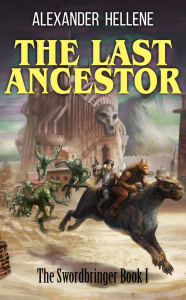Snark versus Banter
[image error]A great comment from Hardwicke Benthow on this post about sarcasm brought a very interesting writing distinction to the forefront. Here’s the discussion reproduced for your convenience:
Hardwicke Benthow
SEPTEMBER 13, 2020 AT 12:36 AM
What are your thoughts on 1930s-style wisecracking banter?
Here’s an example of the type that I mean:
https://www.youtube.com/watch?v=pakoGI2hl14&w
Alexander Hellene
SEPTEMBER 13, 2020 AT 1:32 AM
Great clip! I LOVE that 30s-style banter because it sounds like ADULTS talking. Not a perpetual adolescent, ostensible adult’s facile impression of how they THINK adults speak.
Does that make sense?
Hardwicke Benthow
SEPTEMBER 13, 2020 AT 1:47 AM
“Does that make sense?”
Yes and no. There’s a difference between 1930s-style banter and that of the more modern variety, but I haven’t analyzed the nuances enough to quantify the precise differences. They both utilize witty comebacks and sarcasm, but there’s a different “flavor” about them. I’ve always found the banter in classic screwball comedies and mysteries particularly delicious.
As someone who is interested in writing period-piece novels with the type of banter seen in that clip, what would be your advice on how to keep banter in that spirit, and to keep it from veering into the Joss Whedon territory that you often criticize?
By the way, that clip is from the first Torchy Blane movie “Smart Blonde” (1937). The actress playing Torchy is Glenda Farrell. Jerry Siegel (co-creator of Superman) revealed that the personality of Lois Lane was inspired specifically by Glenda Farrell’s portrayal, although he separately based Lois’ name on Lola Lane (who also played Torchy Blane, albeit only once as opposed to Farrell’s seven times).
Alexander Hellene
SEPTEMBER 14, 2020 AT 12:26 PM
This is a tough question: what’s the dividing line between banter and snark? For a novel, it *might* be easier to thread the needle, because so much of what makes modern snark so annoying in movies and TV is the smarmy DELIVERY. Contrast something modern with the Torchy Blane clip you shared—in the clip, the characters sound like adults and talk like adults. That’s what I meant.
I suppose there’s also a difference between snarky, sarcastic comments and a witty retort that’s funny, sometimes flirtatious, and also moves the story forward. That sounds like a good thing to keep in mind when crafting such dialogue.
This is a great question, one where the sarcasm versus banter distinction might be impossible to accurately describe. It seems like something you just know when you see or hear it.
I’ll attempt anyway.
Sarcasm/snark is:
Constant and in every situation
Often relies on bathos (undercutting any serious situation with attempts at humor)
Trying too hard
Mean, nasty, and petty
Intended to hurt
Sounds like an adult’s version of what they think teenagers sound like
Often has nothing to do with the story; just there for comic relief
Banter is:
Situational
Often depend on the relationship between the characters
If between a man and woman, can be flirtatious and sexy
Playful/friendly
Sounds like adults talking
Typically not insulting
Furthers the story
Remember the golden rule of snark:
WHEN IN DOUBT, DON’T USE IT.
Witty comebacks and back-and-forth work better on screen than in print, but can still be used. Just make sure you use them judiciously and when they make sense, both situationally and character-wise.
And always, always, always only use if necessary.
My dialogue is awesome. Don’t listen to me: read the reviews.




